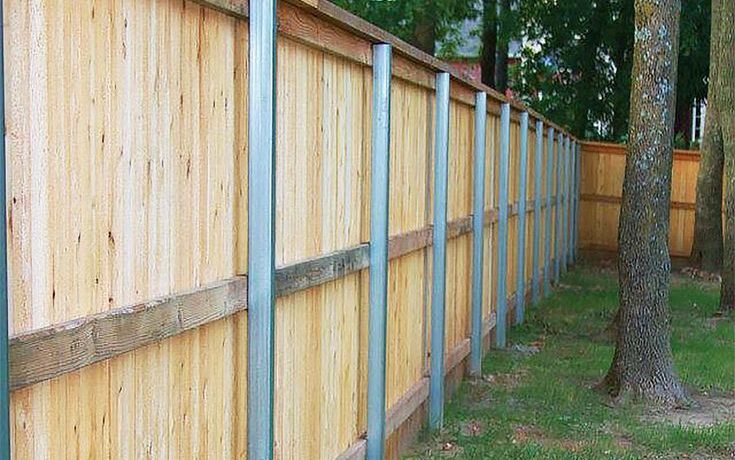All Categories
Featured
When it pertains to preserving a wooden fencing, house owners usually face the decision of whether to repaint or discolor. Both options have their cons and pros, and the option inevitably relies on your visual choices, the sort of timber, and just how much upkeep you're eager to commit to. Here's a detailed contrast to assist you make a notified choice.
The Essentials of Paint and Staining
Painting involves covering the timber with a nontransparent layer of shade. It offers complete insurance coverage, hiding the timber grain while offering superb security versus environmental elements.
Discoloring permeates the wood, enhancing its all-natural elegance while adding a protective layer. Depending upon the kind, stains can vary from clear to solid, allowing varying levels of wood grain exposure.
Pros and Disadvantages of Paint
Pros:
Vast Array of Colors: Repaint offers endless color choices, allowing you to match your fencing to your home's outside or personal design.
Longer Enduring: Top notch outside paint can last as much as 5-7 years, calling for less constant reapplication.
Superior Defense: Repaint forms a thick, solid barrier versus moisture, UV rays, and parasites.
Cons:
Peeling Off and Splitting: Gradually, paint can fracture or peel, specifically in areas with severe weather.
Hides Natural Timber Beauty: If you like the natural grain of timber, paint might not be the very best option.
Greater Upkeep: Repainting needs scratching off the old paint, which can be labor-intensive.
![]()
Advantages And Disadvantages of Discoloration
Pros:
All-natural Appearance: Discolorations maintain and enhance the all-natural beauty of the timber, making it perfect for top notch wood like cedar or redwood.
Less Complicated to Reapply: Unlike paint, spots don't break or peel off. Reapplying discolor typically calls for less surface area preparation.
Versatile End Up Choices: Stains been available in transparent, semi-transparent, and strong ranges, providing various levels of coverage.
Disadvantages:
![]()
Much Shorter Life-span: Discolorations, particularly clear and semi-transparent ones, might require reapplication every 2-3 years.
Minimal Color Choices: While discolorations provide all-natural tones, they lack the broad color scheme available with paint.
Much Less Protective: Discolorations penetrate the timber but don't offer as thick an obstacle as paint, making them somewhat less protective against extreme climate.
Elements to Take Into Consideration
Aesthetic Preferences: If you desire vivid shades and total insurance coverage, paint is the method to go. For a all-natural and rustic look, select discolor.
Wood Type: High-grade woods with attractive grains gain from staining, while lower-grade woods can be painted for a polished appearance.
![]()
Environment: In damp or damp environments, paint's thicker obstacle may provide better protection. In completely dry or modest climates, stains can be sufficient.
Maintenance Dedication: Paint includes less constant reapplication however more initiative during touch-ups. Discoloration needs routine maintenance yet is easier to manage.
Last Thoughts
Both paint and discoloration can effectively protect and enhance your wood fence. The very best option depends upon your concerns, whether they lean toward aesthetic appeals, toughness, or ease of upkeep. By understanding the benefits and drawbacks of each, you can pick the surface that straightens with your requirements and guarantees your fencing stays a standout function of your property for years to come.
The Essentials of Paint and Staining
Painting involves covering the timber with a nontransparent layer of shade. It offers complete insurance coverage, hiding the timber grain while offering superb security versus environmental elements.
Discoloring permeates the wood, enhancing its all-natural elegance while adding a protective layer. Depending upon the kind, stains can vary from clear to solid, allowing varying levels of wood grain exposure.
Pros and Disadvantages of Paint
Pros:
Vast Array of Colors: Repaint offers endless color choices, allowing you to match your fencing to your home's outside or personal design.
Longer Enduring: Top notch outside paint can last as much as 5-7 years, calling for less constant reapplication.
Superior Defense: Repaint forms a thick, solid barrier versus moisture, UV rays, and parasites.
Cons:
Peeling Off and Splitting: Gradually, paint can fracture or peel, specifically in areas with severe weather.
Hides Natural Timber Beauty: If you like the natural grain of timber, paint might not be the very best option.
Greater Upkeep: Repainting needs scratching off the old paint, which can be labor-intensive.

Advantages And Disadvantages of Discoloration
Pros:
All-natural Appearance: Discolorations maintain and enhance the all-natural beauty of the timber, making it perfect for top notch wood like cedar or redwood.
Less Complicated to Reapply: Unlike paint, spots don't break or peel off. Reapplying discolor typically calls for less surface area preparation.
Versatile End Up Choices: Stains been available in transparent, semi-transparent, and strong ranges, providing various levels of coverage.
Disadvantages:

Much Shorter Life-span: Discolorations, particularly clear and semi-transparent ones, might require reapplication every 2-3 years.
Minimal Color Choices: While discolorations provide all-natural tones, they lack the broad color scheme available with paint.
Much Less Protective: Discolorations penetrate the timber but don't offer as thick an obstacle as paint, making them somewhat less protective against extreme climate.
Elements to Take Into Consideration
Aesthetic Preferences: If you desire vivid shades and total insurance coverage, paint is the method to go. For a all-natural and rustic look, select discolor.
Wood Type: High-grade woods with attractive grains gain from staining, while lower-grade woods can be painted for a polished appearance.

Environment: In damp or damp environments, paint's thicker obstacle may provide better protection. In completely dry or modest climates, stains can be sufficient.
Maintenance Dedication: Paint includes less constant reapplication however more initiative during touch-ups. Discoloration needs routine maintenance yet is easier to manage.
Last Thoughts
Both paint and discoloration can effectively protect and enhance your wood fence. The very best option depends upon your concerns, whether they lean toward aesthetic appeals, toughness, or ease of upkeep. By understanding the benefits and drawbacks of each, you can pick the surface that straightens with your requirements and guarantees your fencing stays a standout function of your property for years to come.
Latest Posts
Uncover Budget-Friendly Auto Repairs with Montclare’s Exclusive Service Specials
Published May 29, 25
1 min read
Find Out How Your Partner at WyHy Maximizes Your Savings on Loans and Savings
Published May 25, 25
1 min read
Explore WyHy FCU – Your Path to Superior Financial Services in Wyoming
Published May 24, 25
1 min read
More
Latest Posts
Uncover Budget-Friendly Auto Repairs with Montclare’s Exclusive Service Specials
Published May 29, 25
1 min read
Find Out How Your Partner at WyHy Maximizes Your Savings on Loans and Savings
Published May 25, 25
1 min read
Explore WyHy FCU – Your Path to Superior Financial Services in Wyoming
Published May 24, 25
1 min read